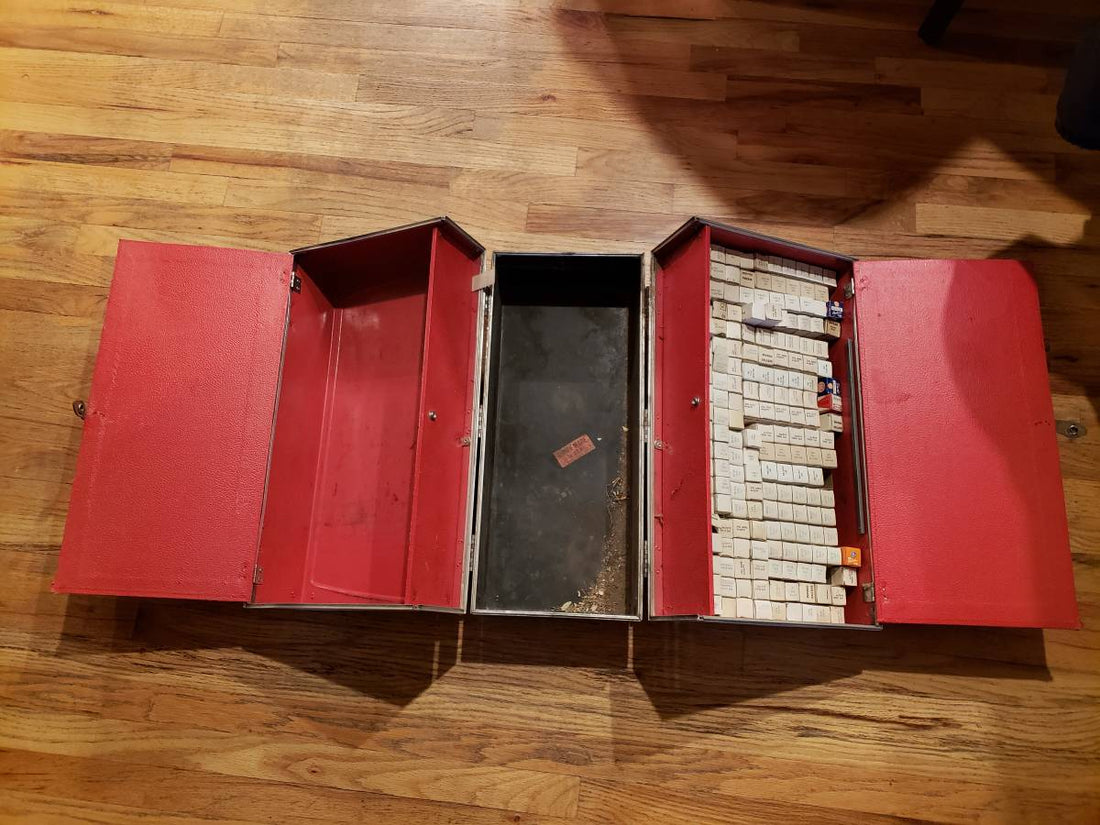There is no mystery in the world today.
–That’s not entirely true. There’s plenty of mystery, mostly related to the inexplicable fame of certain individuals, famous for…being famous.
The mystery that is lacking is in subtlety, or a tantalizing glimpse of—what was that?
Ever seen grainy old footage of a fan dancer? Yowsah. Again: today, no subtlety. You thought JLo in that green Versace dress at the Grammys was blatant, back in 2000?
Hogwash. Compared to Kendall Jenner’s recent après-Oscars outfit, JLo was the Mona Lisa, all hints of a slight smile and a barely-raised eyebrow, compared to…TA-DAA!!
Believe it or not, this tangential rant was prompted by seeing this sad-looking case, which clearly was well-traveled and not at all pampered. And yet, there is a bit of mystery about it: what’s in there?

The header pic reveals the flamboyant innards of the nondescript tube caddy, which looks as though it had been stored in a mildewy cellar for decades. For those of us of a certain age, seeing such a case evokes memories of a TV repairman coming to our house, driving a panel truck, wearing a uniform shirt with an embroidered name patch (“Pete” sticks in my mind, and is likely a creation of cross-firing neurons), and lugging an obviously-heavy tube caddy into the house.
Several elements of this scenario may require explanation for the under-60 set: back before 1965 or ’70, cathode-ray tube TVs largely had vacuum tube electronics. Those TVs were generally pretty hefty, especially if one had an elaborate console.
During this time, the third major television network appeared: ABC. Most of its programming was still in black and white; NBC made a big point of all their national programming being in color, and famously began their shows with an animated peacock, symbolizing the colorful programming.
In mid-’60s small-town Minnesota, that was it: three channels. We knew that The Cities (Minneapolis-St.Paul) had several more channels, ranging from NET (National Educational Television, precursor of PBS) to several mysterious high-numbered UHF stations that seemed as though their studios were in a two-car garage in the burbs. Late at night we could occasional get a drifting, snowy signal from those channels, as I learned when trying to tune in a showing of one bad horror melodrama or another.
So—back to that stranger coming into the house. TVs of that period had knobs to adjust the framing of the picture on the big picture tube: horizontal hold for when the picture rolled, vertical hold for when it whipped side-to-side. When those adjustments couldn’t stabilize the picture or the sound or image became staticky—inevitably, someone in the family would say the magic words: “Guess we got a bad tube.”
If a family had a do it yourselfer, that person might take charge, giving the set a hard whack on the side, which would sometimes cure the ailment, at least for a moment. Advanced DIY-ers might actually understand the basic circuits of the sets of the era...
–but my family did not include such a person. Marveling at the way the garage door opened when Telstar orbited overhead at night was literally cosmic, and beyond our understanding of electricity or RF signals—and having been knocked on my ass as a small boy by a severe shock, courtesy of a frayed cord, I certainly wasn’t going to be the one who unscrewed the perforated masonite back of the set and start poking around.
Enter “Pete”. Or whatever his name was. Pete came in lugging the tube caddy and some tools. He would turn the set on, look and listen critically for a few seconds, mutter “uh huh, uh huh” under his breath, then start unscrewing the back of the set—by hand. No fancy little powered screwdrivers in those days. When asked by a pesky small child (me) what the issue was, Pete would rattle off a string of polysyllabic jargon that was every bit as meaningful to me as listening to my Dad’s doctor friends talking shop. He’d look in the chassis for tubes that glowed too much, too little, or in a color other than the approved palette. If he were in a patient mood, he’d point out the misbehaving tube, unplug the set, take out the bad tube, unfold the caddy to expose his traveling tube stock, pull out the needed replacement and pop it in, plug the set in and fire it up.
He’d use a mirror to view the screen while still behind the set; occasionally his young sidekick would be allowed to hold the mirror. Pete would adjust the focus of the signal, make sure all was well, then button up the back of the set. He’d scribble out an itemized receipt on a pocket pad, keeping a carbon copy, then patiently wait while the lady of the house wrote out a check. The bad tube would be left as evidence of what went wrong, and was generally swiped by the sidekick as a souvenir.
It doesn’t really matter. Anyway, that whole visit would rarely last even a half-hour—then Pete would be on his way.
Several aspects of this story leave me with a sense of wistful nostalgia. There was a time when technology advanced at a fairly measured pace, and devices were built to have extended lifetimes. Of course, as TV picture tubes flattened and became squarer, with less distortion, the old units showed their age, and became indestructible rusty relics destined to be crushed or buried, leaking God knows what into the water table. Today, as HDTv was followed by 1080p, and now 4k and 8k, the sets are largely disposable, and cheap compared to an hourly repair rate. Fix it? Why bother?
And when was the last time that any service person came to your home, was nice to the family offspring, and left you feeling well-served and satisfied with the cost?
I honestly can’t remember the last time I had that experience. And that’s a damned shame.



